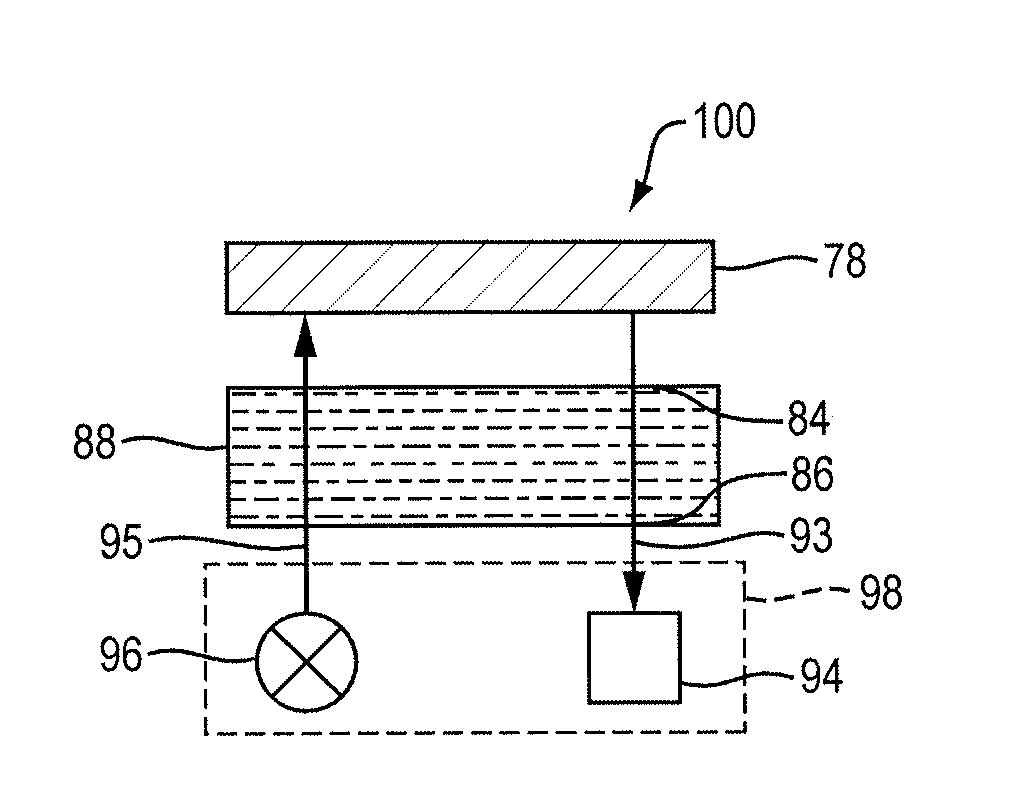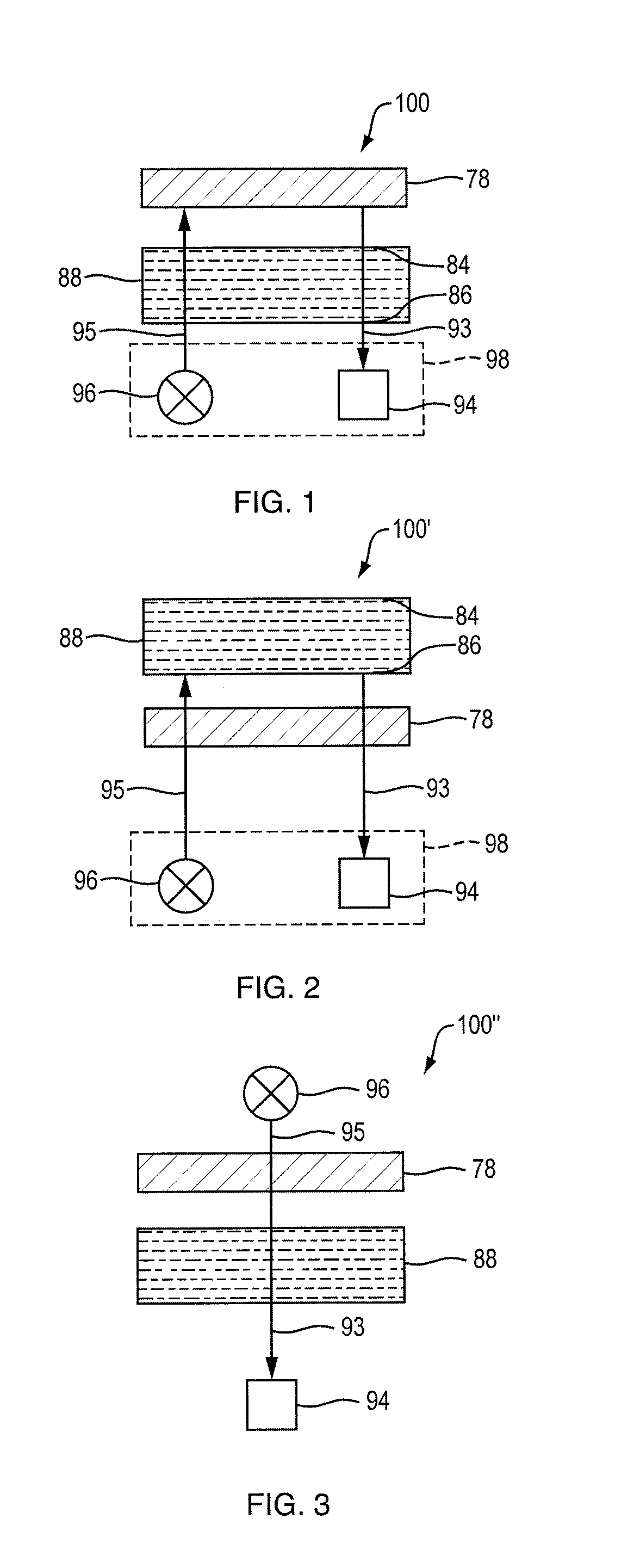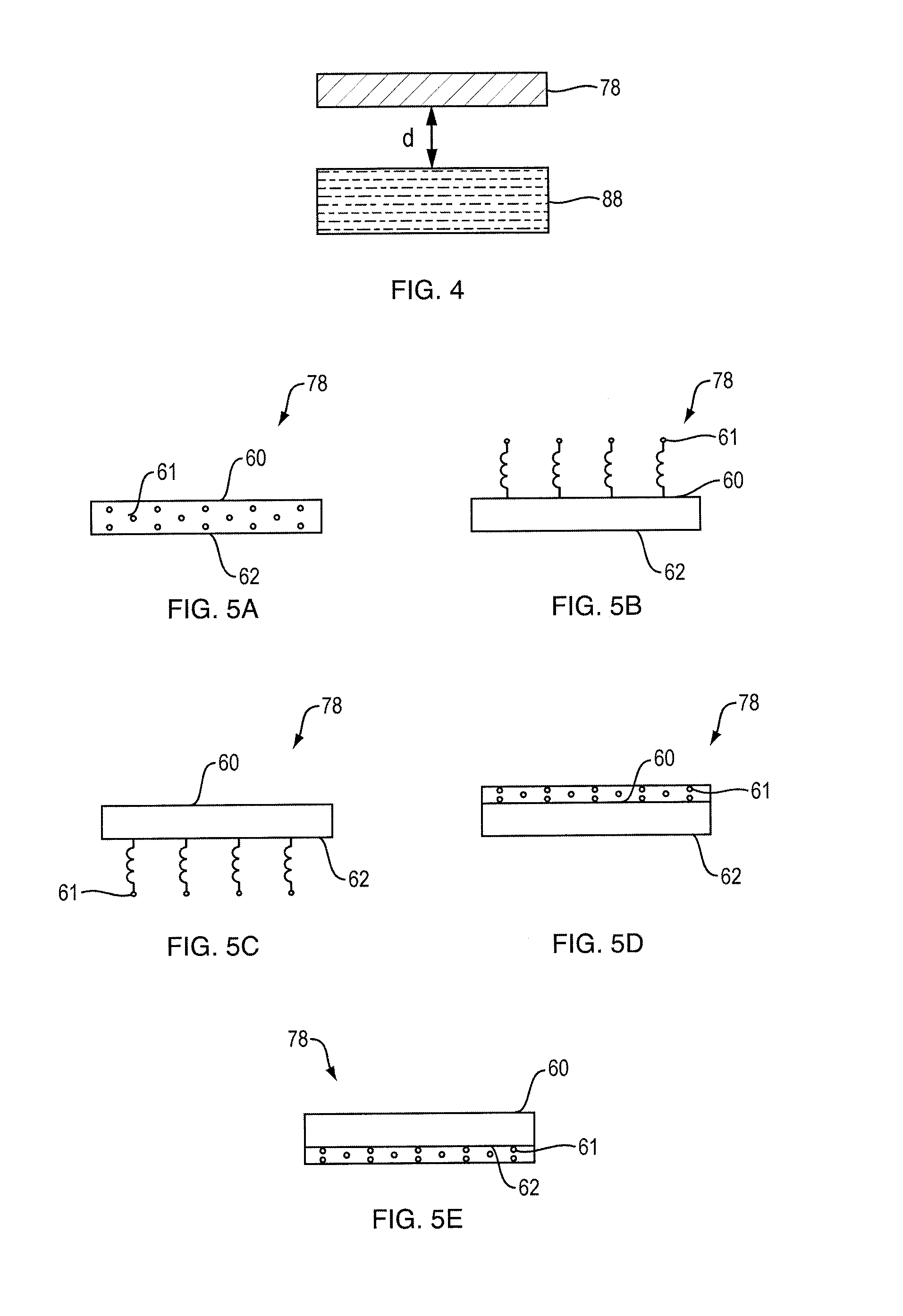Methods and systems for point-of-care coagulation assays by optical detection
- Summary
- Abstract
- Description
- Claims
- Application Information
AI Technical Summary
Benefits of technology
Problems solved by technology
Method used
Image
Examples
Example
[0051]In one aspect, the invention relates to a system for detecting coagulation of a patient plasma or blood sample in a reaction chamber, for example, a chamber of a microfluidic device. The system includes an optical reference part, such as but not limited to a standard fluorescence element, such as but not limited to a fluorophore-doped glass, a polymer film or sheet containing intrinsic fluorescence that is used to generate a fluorescence reference signal. The positioning of the fluorescence element and the coagulating blood / plasma sample is configured to vary the light energy that reaches and / or leaves the optical reference. With such configuration, the system according to the invention de-couples the fluorescence signal from chemical reactions. The variation of the fluorescence signal indicates the kinetics of the plasma / blood sample coagulation process.
[0052]The coagulation detection system according to the invention is used for performing coagulation assays, for example, wi...
PUM
 Login to View More
Login to View More Abstract
Description
Claims
Application Information
 Login to View More
Login to View More - R&D
- Intellectual Property
- Life Sciences
- Materials
- Tech Scout
- Unparalleled Data Quality
- Higher Quality Content
- 60% Fewer Hallucinations
Browse by: Latest US Patents, China's latest patents, Technical Efficacy Thesaurus, Application Domain, Technology Topic, Popular Technical Reports.
© 2025 PatSnap. All rights reserved.Legal|Privacy policy|Modern Slavery Act Transparency Statement|Sitemap|About US| Contact US: help@patsnap.com



